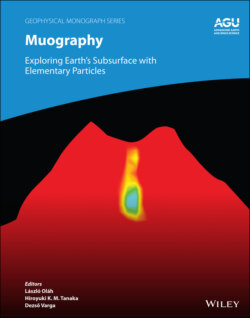Читать книгу Muography - Группа авторов - Страница 64
4.4 MUOGRAPHIC DATA PROCESSING WITH MACHINE LEARNING
ОглавлениеIn this section, we present the application of three different ML techniques to the processing of muographic image data. The significant variation of averaged relative flux values through the erupting Mindamidake crater (Fig. 4.4) suggested the application of conventional classifier models for processing of averaged flux values. Thus, we applied SVM and an artificial neural network (ANN) for the processing of average fluxes calculated for the three selected regions. For the processing of daily muon flux images, a convolutional neural network (CNN) model was utilized. Each model was implemented, trained and tested with scikit‐learn version 0.22.1 (Pedregosa et al., 2011), Keras version 2.4.3 (Keras, 2020), and Tensorflow version 2.3.0 (Tensorflow, 2020). Receiver operating characteristic (ROC) analysis was performed on each trained model to evaluate the eruption forecasting performance using the test data (Fawcett, 2006). The performance of each model was quantified by means of calculation of area under the curve (AUC). The optimal cutoff points, i.e. sensitivity and specificity parameters of the ROC curves, were determined with the Youden index (Youden, 1950). In this study, sensitivity (true positive rate) and specificity (1 ‐ false positive rate) correspond to the probabilities of forecasting an occurred eruption and false alarm, respectively.
In the following subsections, we present briefly the core concepts, the results of hyperparameter tuning, and the achieved eruption forecasting performances for the different models.
